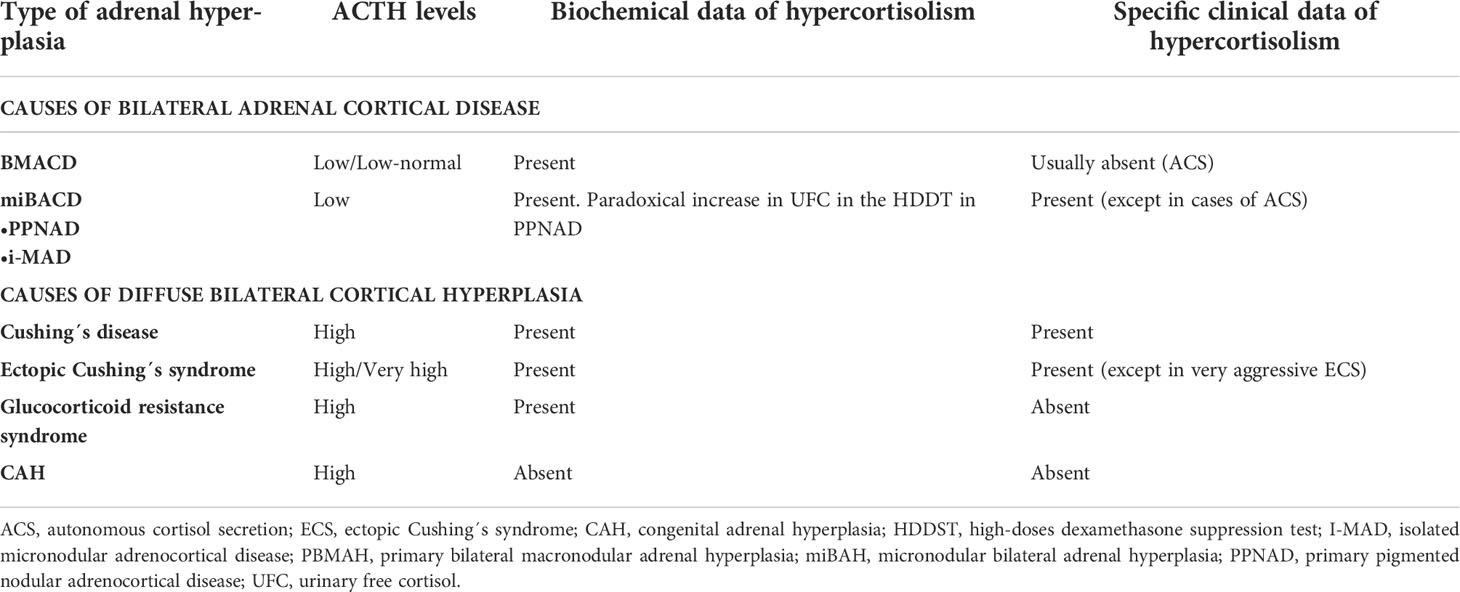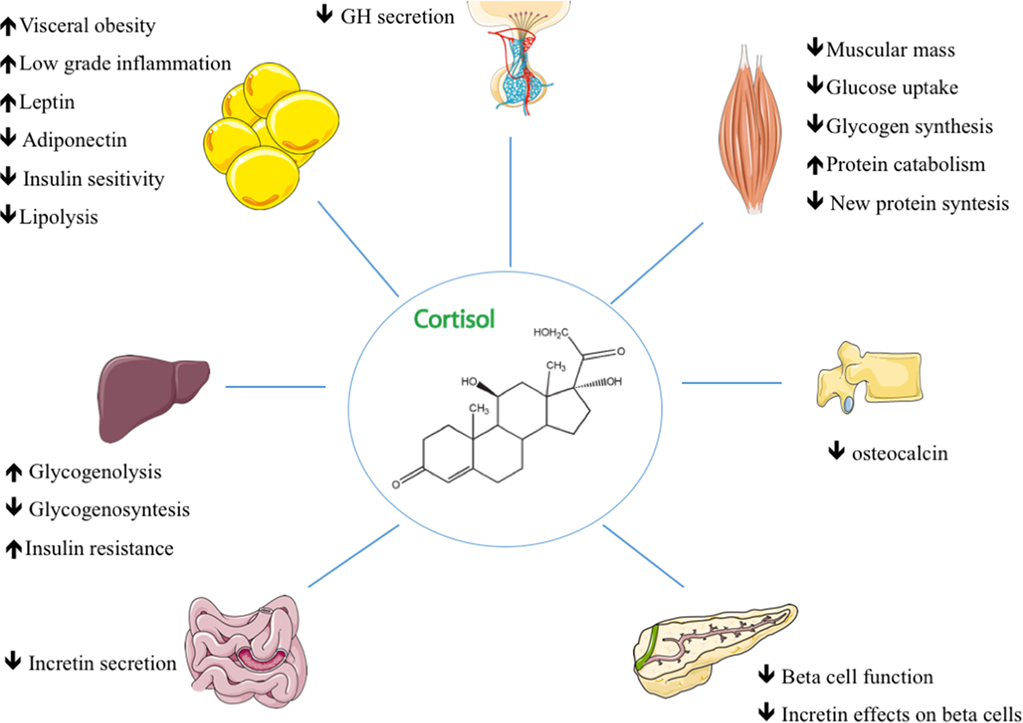Cushing’s Syndrome, also known as Hypercortisolism, is a rare but serious medical condition that occurs when the body is exposed to high levels of cortisol for an extended period. Cortisol, often referred to as the “stress hormone,” plays a vital role in regulating metabolism, immune response, and blood pressure. However, when cortisol levels become abnormally elevated, it can lead to a wide range of health problems. In this article, we will explore the causes, symptoms, and treatments associated with this condition to help you better understand its impact on the human body.

What is Cushing’s Syndrome?
Cushing’s Syndrome occurs when there is an excessive amount of cortisol circulating in the body. This can happen due to various reasons, including prolonged use of corticosteroid medications or the overproduction of cortisol by the adrenal glands. The condition was first described by Dr. Harvey Cushing in the early 20th century, and since then, significant progress has been made in diagnosing and treating it.
The body naturally produces cortisol in response to stress, but maintaining balanced levels is crucial for overall health. When cortisol levels remain consistently high, it disrupts normal bodily functions, leading to a variety of physical and psychological symptoms.
Causes of Cushing’s Syndrome
There are several potential causes of this condition, each involving different mechanisms that result in elevated cortisol levels. Below are the primary causes:
Exogenous Causes
- Prolonged Use of Corticosteroids: One of the most common causes of Cushing’s Syndrome is the long-term use of corticosteroid medications. These drugs, often prescribed for conditions such as asthma, rheumatoid arthritis, and lupus, mimic the effects of cortisol in the body. When taken in high doses or over an extended period, they can cause cortisol levels to rise significantly.
Endogenous Causes
- Tumors in the Pituitary Gland: A tumor in the pituitary gland, located at the base of the brain, can lead to the overproduction of adrenocorticotropic hormone. This hormone stimulates the adrenal glands to produce excessive amounts of cortisol. This specific type of Cushing’s Syndrome is often referred to as Cushing’s Disease.
- Tumors in the Adrenal Glands: Tumors that develop in the adrenal glands, which are located above the kidneys, can directly cause the overproduction of cortisol. These tumors may be benign or malignant.
- Ectopic Production of Adrenocorticotropic Hormone: In some cases, tumors located outside the pituitary gland, such as in the lungs or pancreas, can produce adrenocorticotropic hormone. This leads to increased cortisol production by the adrenal glands.
Symptoms of Cushing’s Syndrome
The symptoms of this condition vary widely and can affect multiple systems in the body. Some of the most common signs include:
Physical Changes
- Weight Gain: Individuals with this condition often experience rapid weight gain, particularly around the face, abdomen, and upper back. This leads to a characteristic “moon face” appearance and a rounded, fatty hump between the shoulders.
- Thinning Skin: High cortisol levels can cause the skin to become thin and fragile, making it more prone to bruising and slow healing of wounds.
- Purple Stretch Marks: Stretch marks that appear reddish-purple and are often found on the abdomen, thighs, and arms are a common symptom.
- Muscle Weakness: Elevated cortisol levels can lead to muscle wasting, resulting in weakness and fatigue.
Hormonal and Metabolic Effects
- High Blood Pressure: Excessive cortisol can increase blood pressure, putting individuals at risk for cardiovascular complications.
- Diabetes: Cortisol interferes with insulin function, leading to elevated blood sugar levels and an increased risk of developing diabetes.
- Osteoporosis: Prolonged exposure to high cortisol levels weakens bones, increasing the likelihood of fractures.
Psychological and Emotional Symptoms
- Mood Swings: Many individuals with this condition experience irritability, anxiety, and depression.
- Cognitive Impairment: Difficulty concentrating, memory problems, and mental fog are common complaints.
Diagnosing Cushing’s Syndrome
Diagnosing this condition can be challenging because its symptoms often overlap with those of other medical issues. Healthcare providers typically use a combination of tests to confirm the diagnosis. These may include:
Blood and Urine Tests
Blood and urine tests measure cortisol levels in the body. Abnormally high levels of cortisol in these samples can indicate the presence of the condition.
Saliva Test
A saliva test measures cortisol levels late at night when cortisol production should naturally decrease. Elevated nighttime cortisol levels can suggest the presence of the condition.
Imaging Studies
Imaging techniques such as magnetic resonance imaging and computed tomography scans are used to identify tumors in the pituitary gland, adrenal glands, or other parts of the body that may be causing excessive cortisol production.
Dexamethasone Suppression Test
This test involves administering a synthetic steroid called dexamethasone to see if cortisol production decreases. In healthy individuals, cortisol levels drop after taking dexamethasone, but in people with this condition, cortisol levels remain high.
Treatment Options for Cushing’s Syndrome
The treatment approach for this condition depends on the underlying cause. Below are the main treatment options available:
Reducing Corticosteroid Medication
If the condition is caused by the prolonged use of corticosteroid medications, healthcare providers may gradually reduce the dosage or switch to alternative treatments. It is important to taper off these medications slowly to avoid withdrawal symptoms.
Surgical Intervention
Surgery is often recommended for cases caused by tumors. The type of surgery depends on the location of the tumor:
- Pituitary Tumors: Surgery to remove a tumor from the pituitary gland is typically performed through the nose using a procedure called transsphenoidal surgery.
- Adrenal Tumors: If the tumor is located in the adrenal glands, surgical removal of the affected gland may be necessary.
- Ectopic Tumors: Tumors located outside the pituitary or adrenal glands require surgical removal or other treatments, such as radiation or chemotherapy.
Radiation Therapy
In cases where surgery is not an option or does not completely remove the tumor, radiation therapy may be used to shrink the tumor and reduce cortisol production.
Medications
Several medications can help control cortisol levels in the body. These include:
- Ketoconazole: This antifungal medication can block cortisol production in the adrenal glands.
- Metyrapone: Another drug that inhibits cortisol synthesis, often used in severe cases.
- Pasireotide: This medication targets the pituitary gland to reduce the production of adrenocorticotropic hormone.
Lifestyle Modifications
In addition to medical treatments, lifestyle changes can help manage symptoms and improve overall health. These may include:
- Dietary Adjustments: Eating a balanced diet low in sodium and refined sugars can help manage weight gain and blood pressure.
- Regular Exercise: Physical activity can improve muscle strength, bone density, and mental well-being.
- Stress Management: Techniques such as meditation, yoga, and deep breathing can help reduce stress and support emotional health.
Living with Cushing’s Syndrome
Managing this condition requires ongoing care and monitoring. Regular follow-up appointments with healthcare providers are essential to ensure that cortisol levels remain within a healthy range. Additionally, individuals with this condition may benefit from joining support groups to connect with others who are facing similar challenges.
While the journey to managing this condition can be difficult, advancements in medical science have made it possible for many individuals to lead fulfilling lives. By understanding the causes, recognizing the symptoms, and exploring treatment options, patients and their families can take proactive steps toward better health.





